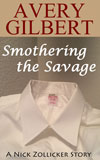
I happened to be in Washington, D.C. on Saturday afternoon with nothing much to do, so I strolled the Mall from the Lafayette Square to Capitol Hill. The place has looked better: the Washington Monument is shrouded in netting as they repair earthquake cracks, the Ellipse is fenced off for re-sodding, and some misbegotten folk festival filled the eastern end of the Mall with tents and portable toilets. As I hadn’t been there since 9/11, I found the thousands of security bollards ringing every site to be distracting and depressing. Not to mention E Street and Pennsylvania Avenue being closed to traffic near the White House. Such are the times we live in.
I visited the Library of Congress because (a) it is magnificently ornate and (b) my grandfather worked there his entire life. Seeing Thomas Jefferson’s personal library—which became the core of the new collection after the British burned the original in the War of 1812—was pretty cool.
Afterwards I headed to the Smithsonian’s Air and Space Museum. That’s when things got weird. When I walked up to Friendship 7, the Project Mercury space capsule in which John Glenn became the first American to orbit the Earth, my first reaction was intellectual: it looked crude and small, a tin can made of bolted plates, barely big enough to hold a man. And then the emotion hit me. Not sentimentality or nostalgia—I watched a lot of launches on live TV as a little boy but this wasn’t about early childhood memories. No, what I felt was a grown man’s awe at the risk Glenn was willing to take. To suit up, climb into this thing and be blasted into outer space atop a rocket required a confidence in the project engineers and technicians, and above all, a personal fearlessness, that is difficult to fathom.
That’s when the emotional punch hit me. This wasn’t about technology it was about the human spirit. About men willing to do what it takes. About dedication, trust and belief.
Surprised at the feelings stirred up by this primitive relic, I quickly moved on to other parts of the museum. I admired the ingenuity of the Wright brothers’ plane, the stylishness of the Lockheed 5B Vega (the model Amelia Earhart flew), and the hard, futuristic lines of the X-15. I appreciated them all as historical objects, but wasn’t moved by them.
Eventually I found myself leaning on a balcony railing looking down at the ungainly Apollo Lunar Module. A woman next to me looked at it for a few moments and then said to me, “My father worked on that.” I turned to her, politely, and said “Really?”
She said, “He worked on that part there,” indicating the dish antenna that carried communications from the lander. “Did he work in Houston or California?” I asked.
“California. He was the chief project engineer for the antenna system.”
I nodded.
“We buried him two days ago in Arlington. I’m so proud of him.”
I nearly lost it. I think I managed to stammer out, “And so you should be.”
“Thanks for listening,” she said, and walked away.
It took me a while to pull it together.
We were great once and we can be again. If we find the spirit.




3 comments:
Avery,
Very moving.
I can totally! relate.
I'm thankful people like you still exist in the U.S.
Best Blog Post of the year. Thanks for that. BTW, loved your interview with Katie Puckrik.
Hello Avery --
I was in Houston (Nassau Bay actually) for a family get-together. My hotel room had a view of the NASA complex. So many times, growing up, I saw that main building on TV during the launches. It was terribly sad to see it just looking like a nothing-special office building. All that optimism gone. Hope you're right.
Post a Comment